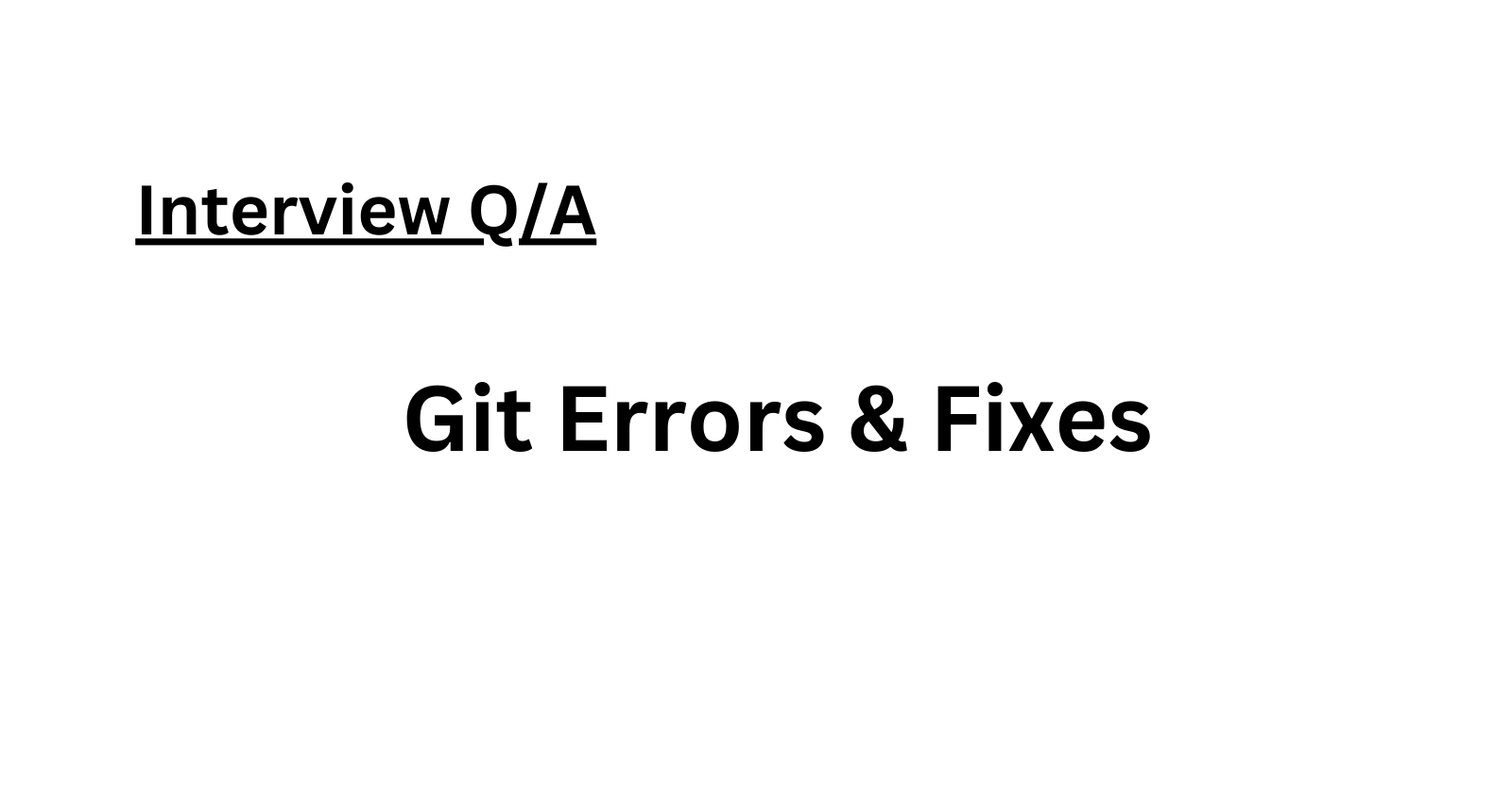Uncovering Common Git Errors: Solutions and Fixes
 Amrutha D
Amrutha D
1. What are some typical errors developers make with Git and how can they be rectified?
Git is a widely used version control system developed by Linus Torvalds in 2005. It simplifies collaboration among developers, allowing them to work on the same files simultaneously while merging changes seamlessly. This system helps in tracking code versions and facilitating effective collaboration for error-free software delivery.
However, despite its common usage, Git involves complexities beyond basic operations like staging, committing, and pushing changes to remote repositories. Many developers struggle to fully utilize its features, leading to mistakes due to a lack of understanding.
2. Accidentally Deleting Files
Deleting files unintentionally is a prevalent mistake in Git. Sometimes, while working on feature upgrades, developers mistakenly delete files they believe are unnecessary, later realizing their importance.
Fortunately, Git records all added or deleted files in the repository, making recovery possible with a simple Git command. For instance, if a file like "404.html" is mistakenly deleted, it can be retrieved using:
codegit checkout HEAD 404.html
This command fetches the latest committed version of the file, reinstating it for modifications.
3. Pushing Unfinished Code
Under pressure to deliver quickly, developers might forget to switch branches and inadvertently push unfinished code to the main branch. This action disrupts the team's workflow, affecting Continuous Integration/Continuous Deployment (CI/CD) processes.
To rectify this, the changes can be reverted to the last working version of the main branch by using:
codegit reset --hard <remote_branch>/<branch>@{1}
Setting configurations in the remote Git repository can also prevent direct commits to the branch:
codegit config --system receive.denyNonFastForwards true
4. Poor Git Commit Messages
Writing vague commit messages is a common pitfall. Messages like "fixed" or "edited" without additional context hinder code comprehension. Fortunately, Git allows the editing of commit messages using:
codegit commit --amend
This command opens a text editor to modify the last commit message.
5. Accidentally Deleting an Entire Git Branch
Accidentally deleting an entire branch without merging it can be alarming, but it can be recovered using the Git reflog command to find the deleted branch's commit ID:
codegit checkout -b <branch-name> <commit-id>
This command recreates the deleted branch for merging and pushing to remote branches.
6. Bad Git Commits
Committing errors can be detrimental, potentially causing problems in the codebase or conflicts with other changes. Rectify such errors by reverting to older, stable commits:
codegit revert <commit-id>
This reverts to a more stable version of the codebase.
7. Too Many Git Commits
Excessive commits with unclear messages can complicate code comprehension. Squashing commits allows combining multiple commits into one:
codegit checkout <branch-name>
git merge --squash <branch-name-to-be-merged>
Solving merge conflicts is necessary after these commands.
8. Forgot To Add the Files
Forgetting to add essential files to commits can result in an incomplete codebase. Quickly rectify this by adding missed files to the last commit:
codegit add <missed-file>
git commit --amend
Conclusion
Understanding Git’s functionalities is crucial to avoid these common mistakes. Learning Git thoroughly instills confidence and reduces the fear of errors, as they can be rectified with a few commands.
Subscribe to my newsletter
Read articles from Amrutha D directly inside your inbox. Subscribe to the newsletter, and don't miss out.
Written by

Amrutha D
Amrutha D
Gen AI Video Creator | Gen AIOps | AIOps Cloud DevOps Engineer | Let's Connect & share Technical knowledge & grow together in Technologies Everyday..